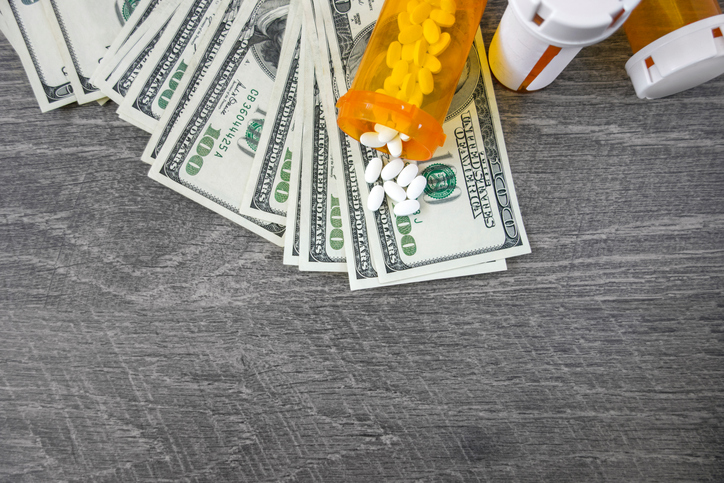
If you think your prescription drugs cost more every year, you’re probably right. Dozens of pharmaceutical companies kicked off 2019 with price hikes on hundreds of medications, and new government estimates say that drug spending could rise 6.1 percent annually by 2020.
I have spent four years piecing together research from more than 160,000 source documents to pull back the curtain on the byzantine strategies pharmaceutical companies use to drive up the cost of prescription drugs.

Health Benefit Consultants, Share Your Expert Insights in Our Survey
Robin Feldman Robin Feldman, author of Drugs, Money and Secret Handshakes: The Unstoppable Growth Of Prescription Drug Prices (Cambridge University Press, March 2019), is Arthur J. Goldberg Distinguished Professor of Law and Director of the Center for Innovation at University of California Hastings in San Francisco.
Understanding The Price Problem
At the heart of the problem are the pharmacy benefits managers (PBMs). These organizations are the middlemen that negotiate between pharmaceutical companies and those who pay for the drugs such as hospitals, pharmacies, insurance companies, and government agencies. PMBs also establish the formularies – the schedules that set the terms on which you, the patient, can access particular drugs and the reimbursement rates you will get.
In a perfect world, PMBs would be negotiating to obtain the best prices possible for you and for your health insurer. Instead, because of the perverse way the system is structured, PMBs help keep the prices high. How does this happen? It’s simple. Drug companies pay PBMs (as well as hospitals and some doctors) to make sure cheaper drugs are left out of the formulary. In fact, drug companies are able to pay everyone along the way, so that lower-priced drugs lose and patients are channeled into more expensive medicines.
Another piece of the puzzle involves the way that pharmaceutical companies are able to “game” the U.S. patent system. Bringing a drug to market can cost hundreds of millions of dollars. In return for this investment, companies are rewarded with patents or with non-patent exclusivities that allow them to charge monopoly prices for a defined time period. When the patent ends, lower-priced competitors should be able to jump in and drive down the price. But that is not happening. Instead, drug companies are able to build massive patent walls, extending protection for their products over and over again.
To do this, they often make minor tweaks such as adjustments to dosage or delivery systems — a once-a-day pill instead of a twice-a-day one; a capsule rather than a tablet. As part of my research, I looked at every regular drug on the market for ten years. I found that three-quarters of drugs with new patents were not new to the market, but old drugs. In other words, there is some innovation in there, but it’s mostly churn. Not only does the system thwart innovation, but it supports escalating drug prices.

A Deep-dive Into Specialty Pharma
A specialty drug is a class of prescription medications used to treat complex, chronic or rare medical conditions. Although this classification was originally intended to define the treatment of rare, also termed “orphan” diseases, affecting fewer than 200,000 people in the US, more recently, specialty drugs have emerged as the cornerstone of treatment for chronic and complex diseases such as cancer, autoimmune conditions, diabetes, hepatitis C, and HIV/AIDS.
This is just the tip of the iceberg. Take pay-for-delay, for example. This occurs when a patent is expiring for a brand-name drug. In that instance, the brand-name drug company settles with a generic drug company, paying them to not enter the market for a certain length of time.
What Can We Do To Fix The Problem?
To begin restoring sanity to the pharmaceutical markets, information must flow. I believe that the best opportunities for shining light into the deep, dark crevices of pharmaceutical pricing lie at federal legislative and regulatory levels. Both the federal government and state legislatures must join the fight to mandate transparency.
In addition, I recommend a “one-and-done” system in which a drug would receive one period of exclusivity and only one. This would be achieved through legislative change to the FDA drug approval system. Under these guidelines, the choice of which “period of exclusivity” could be left entirely in the hands of the pharmaceutical company, with the election made when the FDA approves the drug. A pharmaceutical company would be able to choose whether its period of exclusivity would be a patent, an orphan drug designation, a period of data exclusivity (in which no generic is allowed to use the original safety and efficacy data), or somethings else — but not all of the above and more.
The pharmaceutical industry has introduced extraordinary health-care advances. One cannot overemphasize the major life improvements over the past century that flow from innovation in prescription medications, including new lifesaving antibiotics, treatments for pain, psychopharmacological treatments and cancer drugs. However, if we don’t get a handle on the perverse incentives operating throughout the system, we may be pricing ourselves and our economy into oblivion.
Photo: gerenme, Getty Images
Robin Feldman, author of Drugs, Money and Secret Handshakes: The Unstoppable Growth Of Prescription Drug Prices (Cambridge University Press, March 2019), is Arthur J. Goldberg Distinguished Professor of Law and Director of the Center for Innovation at University of California Hastings in San Francisco.











